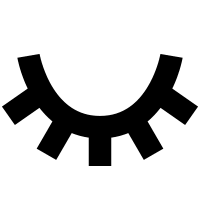The Holding Zone
暂存区





The neighborhood I grew up in was situated around the residence of the Wuhan Municipal Committee of the Communist Party of China and the People's Liberation Army. It’s an area close to government offices, and the surrounding environment reflects and responds promptly to new policies and measures. As a resident of this area, I spent my childhood here and transitioned into adulthood, with my memories of growing up and family life intricately intertwined with the public spaces in this community. Due to the outbreak of the COVID-19 pandemic in Wuhan in 2020, I finally returned here in 2023 after living in Chicago for four years. I discovered that many established norms and policies had changed with the development of Chinese society and economy. Multiple public spaces in my residential district lost their original attributes and functions due to changes in regulations, leading to a semi-abandoned state with prolonged disuse. During the months I’ve been living back home, I've frequently explored these places, even in those where signs indicating prohibition of entry. In investigating and exploring these spaces, I reexamined my experiences of growth, collective memories, and the changes brought about by China's business and industrial development over the past decade. A natural sense of belonging and the ensuing sense of distance have entangled me in a subtle contradiction.
How are public spaces continuously reshaped by socio-political changes, and how do they infiltrate the personal lives of different classes and groups? Does private life in contemporary society exist within long-term fluctuations, randomness, and uncertainty? As we navigate the swift river of time, what remains, and what gets forgotten?
"The Holding Zone" is an ongoing, long-form project where I aim to showcase the fragile intimacy between the individual and public spaces by capturing myself within the environments I reshape. I utilize the projector as a tool of visual intrusion, casting transient regulatory signs into abandoned spaces. These signs briefly exist in the form of light within the span of my camera's shutter release, disappearing without a trace as the shutter closes. Past and present momentarily coexist in the still image, capturing their fleeting presence in the space.
我长大的家在中国共产党武汉市委员会和人民解放军部队驻地周围的一个小区。这个区域靠近机关单位,周边环境对于新政策和措施的反应都有显著和即时的体现。作为这个区域的居民,我在这里度过童年岁月并走向成年,我的成长记忆和家庭生活与这个社区中的公共场所紧密相连。由于2020年在武汉暴发的新冠疫情,长期在美国芝加哥生活的我终于在时隔四年以后回到了这个我长大的地方。我发现许多既定规则都随着中国社会和经济的发展产生了变化,我居住的这个区域内有多个公共场所随着各项规定的改变,失去了空间原有的属性和功能,陷入一种长期无人使用的半废弃状态。在回家居住的这几个月里,我经常悄悄地独自探索这些地方,即使有些地方的入口处还悬挂着禁止进入的指示牌,我也仍然完成了短暂的探险。在对这些空间进行调查和探索的过程中,我重新审视了自己的成长经历,集体记忆,和近十年中国工商业发展所带来的变化,一种天然的归属感和随之而来的距离感让我陷入一种微妙的矛盾。
公共空间是如何被社会政治变革不断重塑,又是如何浸入不同阶级和人群的个人生活的?当代社会的私人生活是否长期存在于波动性、随机性和不确定性之中?在一条湍急的河流中行进,什么是被留下的,什么是被遗忘的?
《暂存区》是一个正在进行的长期项目,我想要通过拍摄我自己和我重塑的场域展现个体与公共空间之间脆弱的亲密。我将投影仪作为一种视觉入侵的工具,把阶段性的规章指示投放于废弃的空间之中,这些规章指示以光线的形式在我的快门时间内短暂存在,随着快门的闭合,这些标识也不留痕迹地在空间内消失,过去与当下此刻在静止的影像中形成短暂的共存。
